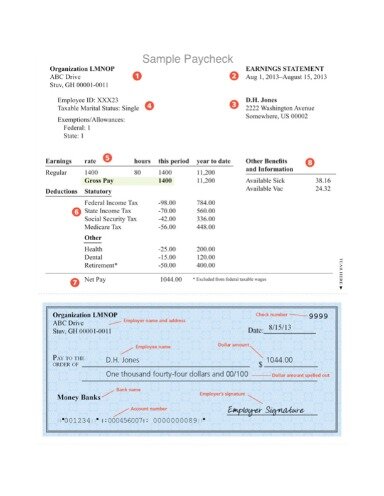Contents:

Some customers may configure their application with a frequency greater than one month, but this is not common. Income Statement Accounts are typically translated using the Average Rate for the period, while Balance Sheet Accounts are translated using the End of Month/Spot rate. Remeasurement is not a translation type that most customers require as part of their business process.
This translation method is used when foreign operations are highly integrated with the parent company. Adaptable Subledger Use only Accounts Receivable, Accounts Payable, or another module as your accounting subledger. Enable Financial Consolidation Instantly centralize your multi-entity, multi-currency accounting with SoftLedger’s financial consolidation software.
The U.S. dollar is the functional currency for all taxpayers except some qualified business units . A QBU is a separate and clearly identified unit of a trade or business that maintains separate books and records. This worksheet is designed so that the reader can simulate “what if” scenarios with amounts and FX rates.
Currency Exchange Rates
Foreign currency translation is the accounting approach in which companies having international businesses translate the international subsidiaries’ financials into the domestic or functional currency to satisfy financial reporting needs. The consolidated financial statements record profits or losses from the translation. This worksheet is based on a simple situation where a U.S. parent company acquired a foreign subsidiary for book value at the beginning of the year and used the cost method to record its investment. Advanced and international accounting textbooks contain more detailed examples.
- In short, it is the home currency of that country where the corporate headquarter is situated.
- According to the FASB ASC Topic 830, Foreign Currency Matters, all income transactions must be translated at the rate that existed when the transaction occurred.
- Family Offices SoftLedger makes it easy to consolidate reporting for family offices in one system.
- The financial statements are translated into domestic currency by translating the income statement.
- Original estimates, subsequent work by Rose or other scholars still found far from negligible effects on trade from pre-euro currency areas, and a consensus grew that currency unions indeed enhance trade, even if by less than initially estimated.
The new accounting standard provides greater transparency but requires wide-ranging data gathering. There are two steps to getting a foreign subsidiary’s trial balance ready to consolidate. By eliminating some barriers to integration, these policy actions boosted efficiency in the financial intermediaries and markets of the euro-area countries where the financial system was more backward and more heavily regulated. To the extent that greater efficiency stimulates the demand for funds and financial services, this also fostered the growth of domestic financial markets or improved access to foreign markets and intermediaries. Next, differences in regulation and enforcement can prevent financial intermediaries from competing across borders on equal footing. For instance, differences in regulation or tax treatment can create stiffer entry barriers for foreign intermediaries.
6.11 Tax Information
Because of this self-selection, in general, least squares estimates of the impact of currency unions on trade cannot be given a causal interpretation. A subsidiary would likely transact in multiple different currencies with 3rd party customers. However, the subsidiary needs to report in one currency, so it would remeasure its financials to present them in the functional… A confirmation message confirms the success of the translation, and the currency values are translated to the selected reporting currency. If such use is permitted, whether the entity needs to apply IAS 29 to its financial statements prepared using a specific model of that concept of financial capital maintenance when it falls within the scope of IAS 29. The Committee considers that different interpretations could lead to diversity in practice in the application of IAS 21 on the reclassification of the FCTR when repayment of investment in a foreign operation occurs.
SIC-19 Reporting Currency – Measurement and Presentation of Financial Statements under IAS 21 and IAS 29. SIC-30 Reporting Currency – Translation from Measurement Currency to Presentation Currency. Open Banking API Integration SoftLedger is entirely programmable via the Open Banking API, enabling instant financial data consolidation.
Retained earnings and other equity items are at historical rates accumulated over time. The famous example of that is the Tobin tax concept that would apply to currency conversions. The stamp duty payable by the buyer of shares is the oldest tax in Great Britain. On the contrary, self-selection into currency unions is strongly hinted at by some distinctive features shared by countries that have been part of common currency areas during the pre-euro period, and included in Rose’s dataset.
The 501c3 meaning advertises that the users would be charged a service fee which would be as much as 90% below the total fees and foreign exchange charges of a typical bank transaction. Much of the savings comes from transacting at the midpoint of exchange rate bid/ask spreads. In the circumstances described above, economic conditions are in general constantly evolving. Therefore, the Committee highlighted the importance of reassessing at each reporting date whether the official exchange rate meets the definition of the closing rate and, if applicable, the exchange rates at the dates of the transactions.
Omnicom Group Reports First Quarter 2023 Results – PR Newswire
Omnicom Group Reports First Quarter 2023 Results.
Posted: Tue, 18 Apr 2023 20:05:00 GMT [source]
According to the FASB Summary of Statement No. 52, a CTA entry is required to allow investors to differentiate between actual day-to-day operational gains and losses and those caused due to foreign currency translation. The current rate method is a method of foreign currency translation where most financial statement items are translated at the current exchange rate. The article is designed to help the reader create the worksheet shown in Exhibit 3, and then use it to see firsthand how FX fluctuations affect both the balance sheet and income statement, and how currency translation adjustments may be hedged. In the light of its analysis, the Committee considered whether to add a project on the presentation of exchange differences resulting from the restatement and translation of hyperinflationary foreign operations to its standard-setting agenda.
What is the difference between foreign currency remeasurement and translation?
The CTA in OCI is a plug figure to make the translated debits equal credits. Susan M. Sorensen, CPA, Ph.D., has 30 years of public accounting experience and is an assistant professor of accounting, and Donald L. Kyle , CPA, Ph.D., is a professor of accounting, both at the University of Houston–Clear Lake. Finally, entry barriers may also arise from asymmetric information between potential foreign entrants and domestic incumbents.
Due to increased crackdowns on tax evasion, banks need to know more about where there clients are taxed and in the case of FATCA face a heavy burden to determine US person status of their account holders. Due to international pressure, countries, such as Switzerland have relaxed their banking secrecy laws. Tax sharing between sovereign countries is increasing, although some countries still collect very little information on shareholdership of companies reasoning that they cannot share what they do not collect. Each financial instrument has a FATCA status and reports identities of such persons and assets to the US Department of the Treasury. The credit for invested share awards relates to amounts charged to the income statement under IFRS 2 and credited to reserves.
IAS plus
Manufacturing Easily track your costs and manage your inventory through every stage of production with SoftLedger’s manufacturing accounting software. Healthcare SoftLedger’s flexibility enables quick and easy adaptation to the changing healthcare landscape. SaaS Companies Our API-capable accounting software makes your subscription management a cinch. Accounting currency is the monetary unit used when recording transactions in a company’s general ledger.

Since the U.S. dollar has strengthened, the amount of U.S. dollars required to pay off the debt has decreased by $61,600. This decrease does not offset all of the CTA since there is an effect on CTA since net income is translated at the weighted average exchange rate. Present in a separate component of equity the cumulative amount of those exchange differences (cumulative pre-hyperinflation exchange differences). IAS 21 paragraphs 9–11 provide factors to be considered in determining the functional currency of an entity. In addition, paragraph 17 of IAS 21 requires an entity to determine its functional currency in accordance with paragraphs 9–14 of the standard. Therefore, paragraph 9 should not be considered in isolation when determining the functional currency of an entity.
This exchange mechanism incorporates the use of an exchange rate set by the authorities (official exchange rate). Without accounting for these exchange rate gains and losses, the amount of operating net income reported or tax payable in a given period could increase. If there is a major change in the exchange rate, then considering them in income statements may cause significant fluctuations in the current year’s earnings. This is because the exchange rates influence the value of any currency to a large extent affecting the revenue and profit calculation after conversion of the currency. The foreign currency translation adjustment or the cumulative translation adjustment compiles all the fluctuations caused by varying exchange rate.
Translation focuses on converting the functional currency for a subsidiary into the reporting currency for the parent company. The visual below outlines where gains and losses for each activity are reported in the financial statements. Paragraph 8 of IAS 21 defines the ‘closing rate’ as the spot exchange rate at the end of the reporting period; and the ‘spot exchange rate’ as the exchange rate for immediate delivery. In the light of those definitions, the Committee concluded that the closing rate is the rate to which an entity would have access at the end of the reporting period through a legal exchange mechanism.
Ermenegildo Zegna Group Kicks-Off 2023 With Strong First Quarter … – businesswire.com
Ermenegildo Zegna Group Kicks-Off 2023 With Strong First Quarter ….
Posted: Thu, 20 Apr 2023 20:30:00 GMT [source]
•the effects of changes in accounting policies or material errors in accordance with IAS 8. Estimated the effect of the euro on trade using a differences-in-differences identification strategy and an augmented gravity equation estimated by Poisson pseudo-maximum likelihood. The overall conclusion of this study was that, after controlling for the fact that the eurozone countries already traded much more intensively in the past, there is little evidence that the creation of the euro had an effect on trade for the so-called Euro-12 . It is, however, possible that the euro had and will have a significant trade effect for newer eurozone members, whose economies were not so deeply integrated before joining the euro.
Paragraph 7 of IAS 1Presentation of Financial Statementsstates that components of OCI include ‘gains and losses arising from translating the financial statements of a foreign operation’. The Committee observed that this explanation is also relevant if the foreign operation’s functional currency is hyperinflationary. Accordingly, the Committee concluded that an entity presents in OCI any exchange difference resulting from the translation of a hyperinflationary foreign operation. The company’s cumulative translation adjustment should include all the translation adjustments arising from foreign currency translation. This CTA is shown under the translated balance sheet’s comprehensive income section (part of shareholders’ equity), which compiles all the gains or losses arising from exchange rate fluctuations.
The resulting translation adjustments are not reported in income, but rather accumulated included in other comprehensive income within equity. If your functional currency is not the U.S. dollar, make all income tax determinations in your functional currency. At the end of the year, translate the results, such as income or loss, into U.S. dollars to report on your income tax return. The specific effects of translation are often addressed in the Management section of the Annual Report or in the notes to the financial statements.
After that, the foreign entity’s functional currency is to be determined, i.e., identifying the currency in which financial statements of the foreign currency are reported. The translation of financial statements into domestic currency begins with translating the income statement. According to the FASB ASC Topic 830, Foreign Currency Matters, all income transactions must be translated at the rate that existed when the transaction occurred.

An entity is required to determine a functional currency based on the primary economic environment in which it operates and generally records foreign currency transactions using the spot conversion rate to that functional currency on the date of the transaction. To solve these problems, foreign currency translation is a critical process that accountants must execute to realize these gains and losses. The process ensures that a company’s financial statements are accurately consolidated into their functional currency. There are different rules for translating items in financial statements including assets and liabilities, income statement items, cash flow statement items, etc. Considering its complexity, it may be best to consult an accountant regarding the rules of accounting for foreign currency translation. The gains and losses arising from this are compiled as an entry in the comprehensive income statement of a translated balance sheet.
In short, it is the home currency of that country where the corporate headquarter is situated. The functional currency is the one which the company uses for the majority of its transactions. You can choose the currency of the country where your main headquarters are located or where your major operations are. Translate all expense and revenue allocations using the exchange rates in effect when those allocations are recorded. Examples of allocations are depreciation and the amortization of deferred revenues. Popular with multinationals, functional currency represents the primary economic environment in which an entity generates and expends cash.
It is also used in the development of an accounting policy only when no Standards specifically apply to a particular transaction, other event or condition, or deal with similar and related issues. The Committee noted that paragraph 48D of IAS 21 requires that an entity must treat ‘any reduction in an entity’s ownership interest in a foreign operation’ as a partial disposal, apart from those reductions in paragraph 48A that are accounted for as disposals. How an entity applies the requirements in paragraph 48D is largely dependent on whether it interprets ‘any reduction in an entity’s ownership interest in a foreign operation’ to mean an absolute reduction, a proportionate reduction, or both. The assets, liabilities, equities, and earnings of a subsidiary of a multinational company are usually denominated in the currency of the country it is situated in. If the parent company is situated in a country with a different currency, the values of the holdings of each subsidiary need to be converted into the currency of the home country. Steps apply to a stand-alone entity, an entity with foreign operations , or a foreign operation .
When translating the financial statements of an entity for consolidation purposes into the reporting currency of a business, translate the financial statements using the rules noted below. If there are translation adjustments resulting from the implementation of these rules, record the adjustments in the shareholders’ equity section of the parent company’s consolidated balance sheet. If the process of converting the financial statements of a foreign entity into the reporting currency of the parent company results in a translation adjustment, report the related profit or loss in other comprehensive income.
